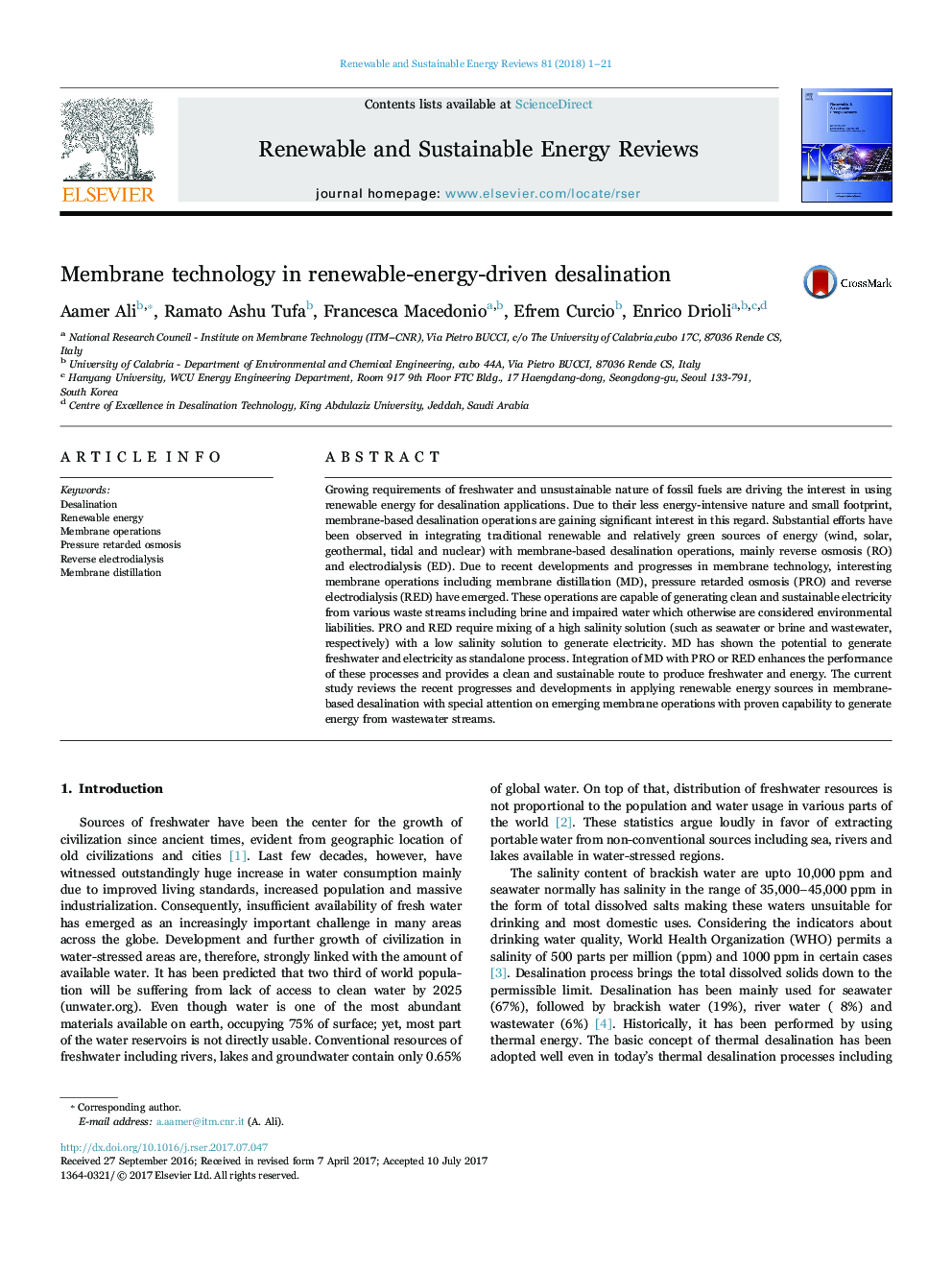| Article ID | Journal | Published Year | Pages | File Type |
|---|---|---|---|---|
| 5481939 | Renewable and Sustainable Energy Reviews | 2018 | 21 Pages |
Abstract
Growing requirements of freshwater and unsustainable nature of fossil fuels are driving the interest in using renewable energy for desalination applications. Due to their less energy-intensive nature and small footprint, membrane-based desalination operations are gaining significant interest in this regard. Substantial efforts have been observed in integrating traditional renewable and relatively green sources of energy (wind, solar, geothermal, tidal and nuclear) with membrane-based desalination operations, mainly reverse osmosis (RO) and electrodialysis (ED). Due to recent developments and progresses in membrane technology, interesting membrane operations including membrane distillation (MD), pressure retarded osmosis (PRO) and reverse electrodialysis (RED) have emerged. These operations are capable of generating clean and sustainable electricity from various waste streams including brine and impaired water which otherwise are considered environmental liabilities. PRO and RED require mixing of a high salinity solution (such as seawater or brine and wastewater, respectively) with a low salinity solution to generate electricity. MD has shown the potential to generate freshwater and electricity as standalone process. Integration of MD with PRO or RED enhances the performance of these processes and provides a clean and sustainable route to produce freshwater and energy. The current study reviews the recent progresses and developments in applying renewable energy sources in membrane-based desalination with special attention on emerging membrane operations with proven capability to generate energy from wastewater streams.
Keywords
Related Topics
Physical Sciences and Engineering
Energy
Renewable Energy, Sustainability and the Environment
Authors
Aamer Ali, Ramato Ashu Tufa, Francesca Macedonio, Efrem Curcio, Enrico Drioli,
